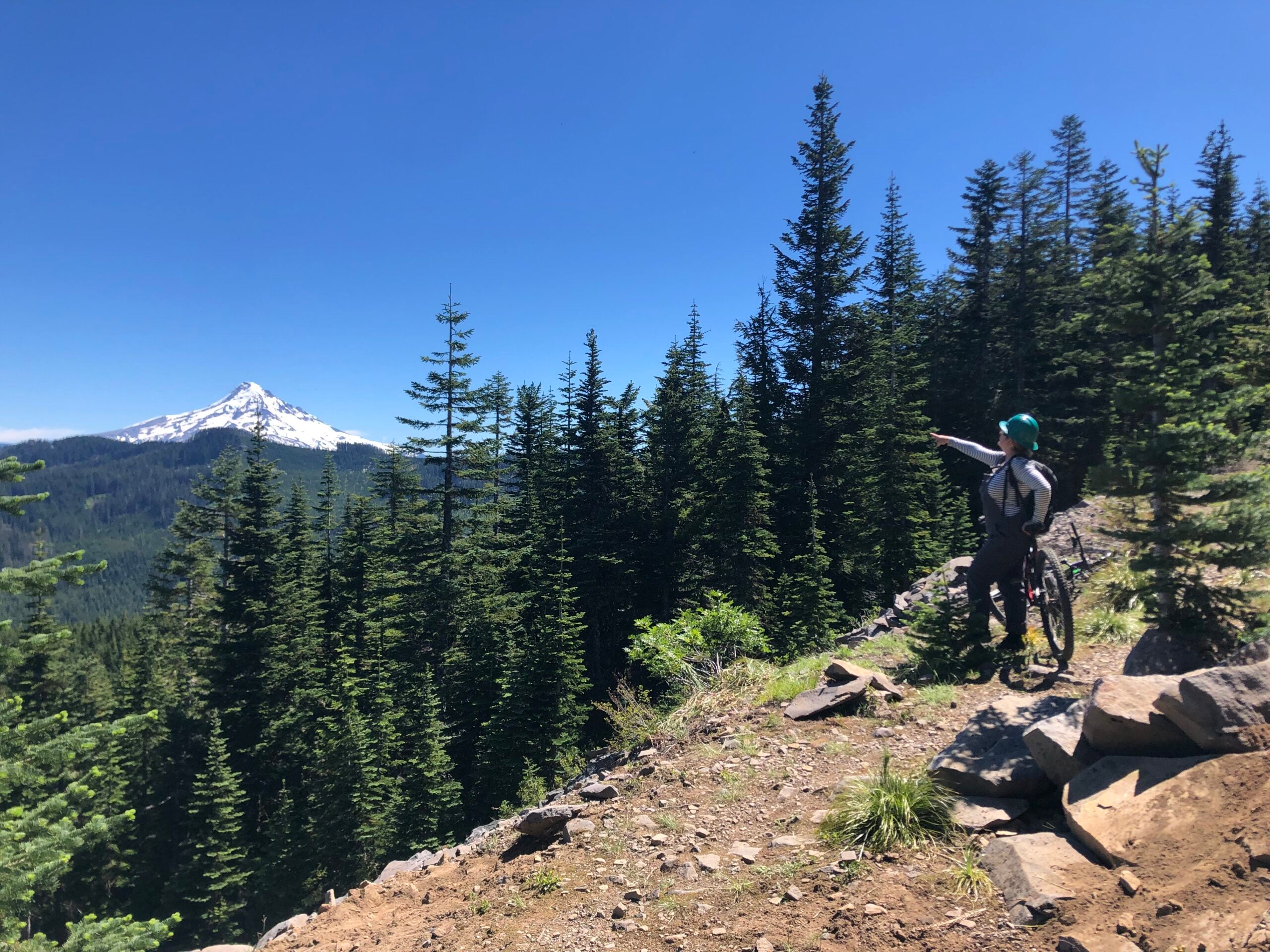If you ride mountain bikes you probably have a good idea of what contributes to the ideal singletrack experience. Every rider has their favorite trail type and riding style; whether it’s fast and flowy berms or a more rustic trail experience that involves weaving around natural features like rocks, roots and drops. Whatever your preferred terrain, I think everyone can agree that there is a lot of hard work that goes into keeping trails rideable and well maintained.
Before I was a mountain biker, I would hike a lot of the same trails that I now ride in Oregon. But as I gained more experience as a mountain biker, I started to see the trails in a completely different way from when I would hike them. I soon learned that a lot of the mountain bike-specific trails were being maintained by local non-profit advocacy groups and not solely by the National Forest Service or Bureau of Land Management. At my first trail work party in 2016, I really connected with the effort that happens off the bike to make the trails I love to ride thrive, and that allows different user groups the ability to enjoy them equally. Since then, being involved in trail work has become an important part of my own overall mountain biking experience.

The Oregon Timber Trail Alliance
One trail advocacy group that I found who’s committed to making a state-wide impact is the Oregon Timber Trail Alliance (OTTA), as its namesake trail truly spans the length of the state. While there are hundreds of groups doing similar work across Oregon and all over the United States, to me, the OTTA has stood out in recent years as a leader in making its trail network an opportunity for stewardship, education and community while placing a heavy focus on sustainability.
Conceived in 2015, the nearly 700-mile trail network stretches south-to-north across the state, beginning at the California/Oregon border and terminating at the Oregon/Washington line. The expansive trail is subdivided into four tiers, each with its own distinctive geography and biodiversity.
I was able to connect with Gabriel Amadeus Tiller, OTTA Executive Director, who provided insight into why the OTTA Stewardship opportunities and trailwork advocacy is important to the rider experience along with how the system benefits the nearby communities it passes through. Gabe spoke to three major values that are at the heart of the OTTA’s advocacy work:
On Education
“For me

On Quality Trail Experience
“From the outset, we identified what our users’ sought experience was and learned that people want solitude, access to nature, backcountry landscapes, and above all; singletrack trails to ride on.”
On Community and Connection
“The OTTA’s Stewardship Campouts have been hands down my favorite part of the OTT experience and I know many of our volunteers say the same thing. There’s nothing like working hard out in nature with a bunch of new/old friends, enjoying a meal together under the stars, and then coming back to ride that section of trail you helped make better. Trail work events can seem intimidating, but we try really hard to keep ours approachable and welcoming to folks with zero experience. You don’t need to have any special gear or any training, just a desire to help make trails better for the next rider. I guarantee you’ll go home having learned something, I still do every single time.”
My Time With the OTTA
In June I was able to join the OTT work party in the Hood Tier of the Timber Trail. We worked to repair and revive a little-known section of trail above the popular Post Canyon system in Hood River, Oregon. This section of trail will replace a current forest road connection so users can stay on singletrack and access more remote areas and camping options.
My experience at the work party was one of community, inclusion and education. We took the time as a group to discuss the specific needs of the trail to improve the rider and non-rider experience. On the ground, we analyzed different aspects of the terrain and how manipulating specific features would enforce sustainable usage and prevent widening. My favorite part of the actual physical work was building a fun rock garden rollover as an A-line option, built for the rider that wants to keep it spicy!

The people that came and volunteered were from all walks of life; one ultra trail runner, seasoned advocates with years of trail building experience, recreational mountain bikers that were first-time trail workers, dedicated bike packers, and Hood River locals who just wanted to contribute to keeping their local trails accessible. Everyone I worked alongside that weekend brought a different perspective to the trail and their own point of view.
My biggest takeaway from participating in the OTT Stewardship is that community is what drives positive action—a lot of amazing work can be accomplished when you bring people with different experiences or perspectives together with a common goal. I find it rewarding, but an easily overlooked observation, to know that many mountain bikers after me will be able to enjoy the section of trail that I worked on, work that will hopefully make their own experience more positive when they ride it.






Comments